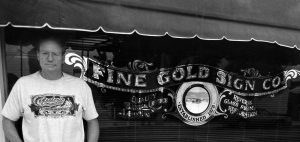Receiving my MBE at Windsor Castle was a memorable occasion. But I will never forget the moment I set eyes on Michelin House. Inside and out, this beautiful building is a stunning example of London’s eclectic architecture – and has a fascinating history.

The marvel of London’s architecture
I love architecture, and I especially love the way London presents different styles side by side. You look at modern tower blocks, The Gherkin and places like that and right next to them are 19th Century London pubs – and it just fits, doesn’t it?
Michelin House is a case in point. Built in 1911, Michelin House first graced Fulham Road before the first of Chelseas’s upmarket flats. It is a unique building, incorporating features of both Art-Nouveau and Art-Deco styles, yet it still somehow blends in with the modern architecture around it.

The day after having received my MBE, my family and I were on our way to see an interior designer, Nina Campbell, when we first glimpsed Michelin House from a taxi window. I didn’t even know of its existence, and it blew me away from the moment I saw it.
A stunning piece of work – inside and out
Formerly the ostentatious UK headquarters and storage depot of French tyre firm Michelin, this Grade II listed building was sold in the 1980s and transformed into a restaurant, oyster bar, retailing store and office space.
After our meeting, we decided to go back and eat at the restaurant. Whilst there, I spent a good two hours taking photographs and learning about the history of this beautifully ornate and uniquely shaped building.

It was designed for Michelin by one of its own employees, engineer Francois Espinasse. Espinasse is also thought to have worked on the design of Michelin’s Parisian headquarters, but not much else is known about him, and even the French Order of Architects has no record of him.
On a functional level, Michelin House is an early example of concrete construction, ideal for storing tyres safely and efficiently, but it was the design factor that caught my eye, especially the intricate tile work.

Although the structure resembles many Art-Deco buildings, Michelin House was designed and built at the end of the Art-Nouveau period and you can see this influence in the decorative metalwork at the front of the building and the plant-inspired designs that adorn the tyre motifs at the front and sides.
I was surprised to learn that some of the original building was restored when publisher Paul Hamlyn and restaurant retailer Sir Terence Conran teamed up to redevelop Michelin House. In fact, the large stained glass windows you see are replacements: the originals were removed during World War II for protection and were never found. The designs reflect advertising campaigns of the time and feature the iconic Bibendum – or ‘Michelin Man’. Other windows feature etchings of Parisian streets, a nod to Michelin’s link with roadmaps and tourism.

Two glass domes – or cupolas – frame the front of the building and have been cleverly designed to resemble a stack of tyres. There are also decorative tiles, along the front of the building, that show famous Michelin-clad racing cars of the time.
As I went inside, I came across more stunning tile work, including some beautiful tiling at the front of the building – an area which was once a public tyre fitting bay. There is also an amazing mosaic on the reception floor depicting Bibendum holding a goblet of nuts and bolts.

I just couldn’t get enough of Michelin House that day. It is an inspiring piece of work and made a memorable occasion even more special.
Do you appreciate decorative arts from a bygone era?
Wherever I go, I am always captivated by beautiful fascias, shop signs and other decorative pieces. Exquisite gilding and lettering always stand out, and I want to give you the chance to master these techniques. If you have an interest in preserving traditional arts and crafts, take a look at my online courses.








